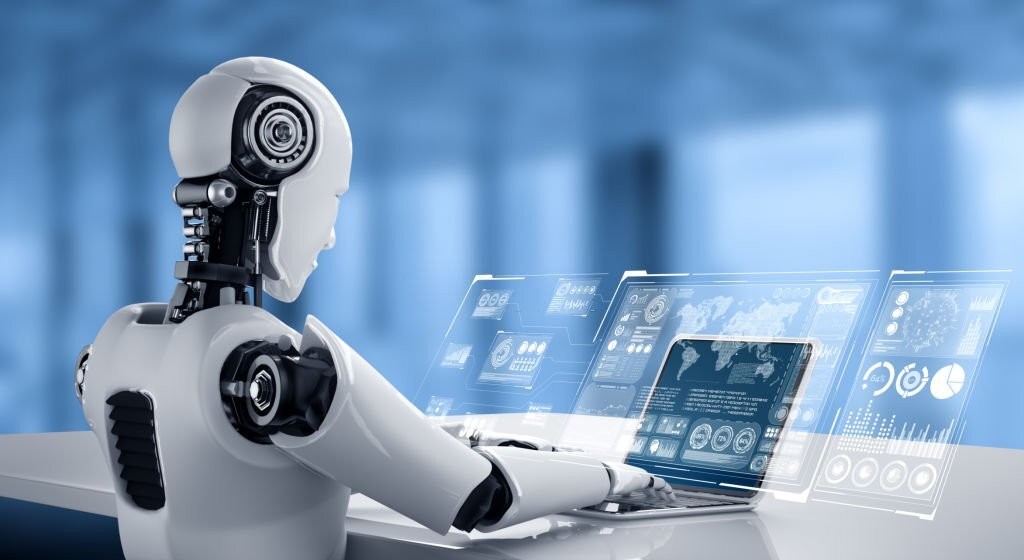Introduction:
The industrial robot industry is currently experiencing a significant transformation, driven by the integration of cutting-edge technologies that aim to improve efficiency, precision, and flexibility in manufacturing and other industrial processes. With rapid advancements in areas such as artificial intelligence (AI), machine learning, 5G connectivity, and quantum computing, the capabilities of industrial robots have expanded exponentially. These innovations are enhancing operational productivity, increasing collaboration between robots and humans, and unlocking new possibilities for automation in industries ranging from automotive and electronics to pharmaceuticals and aerospace. In this article, we explore the latest technological innovations reshaping the industrial robot industry and their potential impact on the future of automation.
The Rise of AI-Powered Industrial Robots
Artificial intelligence has been a game-changer in industrial robotics. AI technologies, such as machine learning, computer vision, and natural language processing, are being integrated into industrial robots, enabling them to perform tasks with a level of autonomy and flexibility previously unattainable. AI-powered robots are capable of learning from data, making decisions, and adapting to dynamic environments in real-time, which significantly increases their ability to handle complex tasks.
Machine learning, a subset of AI, is particularly influential in enabling robots to improve over time. By analyzing performance data from sensors and cameras, robots can refine their actions, learn from previous experiences, and optimize their movements to perform tasks more efficiently. For instance, a robot tasked with assembling components can improve its accuracy and speed by learning from past operations. This continual learning process makes AI-powered robots more efficient, reducing the need for human intervention and minimizing the likelihood of errors in production.
AI also enhances the ability of robots to perform intricate tasks such as quality control. With advanced computer vision, AI-powered robots can detect defects in products or components during the manufacturing process, allowing them to correct mistakes in real-time and ensure high-quality output. These robots can be deployed in high-precision industries such as automotive, electronics, and aerospace, where quality control is critical.
5G Connectivity and Industrial Robots: Enabling Real-Time Communication
The advent of 5G Technology is set to revolutionize industrial automation by providing ultra-low latency, high-speed data transmission, and enhanced reliability. 5G networks facilitate seamless communication between industrial robots, human operators, and other machines, enabling real-time data sharing and coordination across the production line. This technology is particularly valuable in industries that require fast, precise decision-making, as it allows robots to respond instantly to changes in production schedules, inventory levels, or machine performance.
Download FREE Sample of 5G Technology Market
With 5G, industrial robots can communicate more efficiently with central control systems, IoT devices, and other robots, improving collaboration and coordination on the factory floor. For example, a robot in a production line can receive updates on production schedules and adjust its movements or actions accordingly, reducing idle time and improving throughput.
The high-speed data transfer capabilities of 5G also support the remote monitoring and control of industrial robots. Operators can access real-time data from anywhere, enabling them to monitor robot performance, troubleshoot issues, and make adjustments on the fly. This is especially beneficial in industries with hazardous environments, such as mining, oil, and gas, where remote operation reduces the need for human presence in dangerous locations.
Collaborative Robots (Cobots): Shaping the Future of Human-Robot Interaction
The development of collaborative robots, or cobots, is one of the most exciting advancements in industrial automation. Cobots are designed to work alongside human operators in a shared workspace, performing tasks that require strength, precision, or repetitive motions while allowing humans to focus on higher-level decision-making or creative tasks. Unlike traditional industrial robots, which are often isolated in protective enclosures for safety, cobots are equipped with advanced sensors and safety features that enable them to work directly with humans in a safe and collaborative manner.
Cobots are particularly useful in environments where human workers may be required to perform physically demanding tasks or where a high degree of flexibility and adaptability is needed. For example, cobots are commonly used in assembly lines, where they can assist with tasks like lifting heavy components, handling parts, or even testing products. By working alongside humans, cobots help improve productivity and reduce the physical strain on workers, enhancing workplace safety and comfort.
Additionally, cobots are easier to program and deploy than traditional industrial robots. Many cobots can be quickly reprogrammed to perform different tasks, making them ideal for industries that require flexibility and adaptability in their production processes. As businesses increasingly adopt cobots, they are finding that these robots provide significant cost savings and increased efficiency, all while enhancing the capabilities of human workers.
Exoskeletons and Wearable Robotics: Augmenting Human Capabilities
In the pursuit of improving human performance in industrial settings, exoskeletons and wearable robotics have gained significant traction. These wearable devices are designed to augment the capabilities of human workers, enhancing their strength, endurance, and overall performance. Exoskeletons are typically worn on the body, providing external support to reduce the physical strain of lifting heavy objects, maintaining posture, or performing repetitive motions.
Exoskeletons are particularly beneficial in industries where workers are required to perform physically demanding tasks, such as construction, logistics, and manufacturing. By reducing the risk of injury and fatigue, exoskeletons help workers remain productive for longer periods, while also enhancing safety and reducing the likelihood of musculoskeletal disorders. For example, an exoskeleton could be used to assist a worker with lifting and carrying heavy items, allowing them to complete the task more easily and with less strain on their body.
In addition to reducing physical stress, exoskeletons can improve the overall efficiency of manufacturing processes. By augmenting a worker’s capabilities, these wearable devices enable them to complete tasks more quickly and with greater precision. As exoskeleton technology continues to evolve, it is expected to play a significant role in transforming the way humans interact with industrial robots, creating new opportunities for collaboration and enhanced productivity.
Quantum Computing’s Potential Impact on Robotics: Unlocking New Possibilities for AI and Automation
One of the most exciting prospects for the future of industrial robots lies in the application of quantum computing. Quantum computing is an emerging field that leverages the principles of quantum mechanics to perform complex calculations at speeds far surpassing those of traditional computers. While still in the early stages of development, quantum computing has the potential to revolutionize industrial robotics by unlocking new possibilities for AI, machine learning, and automation.
In robotics, quantum computing could greatly enhance the performance of AI algorithms by enabling faster data processing and more efficient learning. For example, quantum computers could process vast amounts of sensor data from robots, allowing them to make decisions in real-time with greater accuracy. This could improve the autonomy of robots, allowing them to adapt more effectively to changing environments and complex tasks.
Additionally, quantum computing could facilitate the development of more advanced optimization algorithms, enabling robots to plan and execute tasks more efficiently. This would be particularly beneficial in industries such as logistics and manufacturing, where robots need to optimize their movements and decisions to minimize downtime, reduce energy consumption, and improve overall productivity.
The integration of quantum computing with industrial robots could also enhance their ability to handle tasks that involve complex simulations or large datasets, such as predictive maintenance, supply chain optimization, and product design. By harnessing the power of quantum computing, manufacturers could unlock new levels of automation, efficiency, and intelligence, paving the way for a new era of robotics.
The Future of Industrial Robotics: Trends and Challenges
As the industrial robot industry continues to evolve, there are several key trends that will shape the future of automation. AI, machine learning, and quantum computing will continue to enhance the autonomy and intelligence of robots, allowing them to perform an even wider range of tasks. Cobots and exoskeletons will further improve collaboration between humans and robots, making workplaces safer and more efficient.
However, as the technology advances, there will also be challenges to overcome. Issues such as data security, robot ethics, and the integration of new technologies into existing infrastructure will need to be addressed. The increasing use of AI and quantum computing raises questions about the ethical implications of automation, particularly in relation to job displacement and the need for upskilling workers. Furthermore, the high costs associated with implementing advanced technologies like quantum computing and AI-powered robots may limit their adoption in some industries.
Despite these challenges, the continued development of industrial robots and the integration of advanced technologies will lead to a more automated, efficient, and flexible manufacturing landscape. As businesses adapt to the changing technological landscape, they will be better equipped to meet the demands of the modern market, enhance productivity, and improve the quality of their products and services.
Conclusion
The industrial robot industry is undergoing a profound transformation, driven by the integration of groundbreaking technologies such as AI, 5G connectivity, exoskeletons, and quantum computing. These innovations are not only increasing the capabilities of robots but also enhancing human-robot collaboration and unlocking new possibilities for automation across a variety of industries. As the technology continues to evolve, the potential for robotics to revolutionize manufacturing and other sectors is immense. However, to fully realize the benefits of these innovations, businesses must navigate challenges related to ethics, costs, and infrastructure. With continued research and development, the industrial robot industry is poised for even greater advancements in the coming years.
Read the complete blog: https://www.nextmsc.com/blogs/industrial-robots-market-trends






Comments